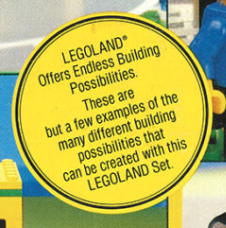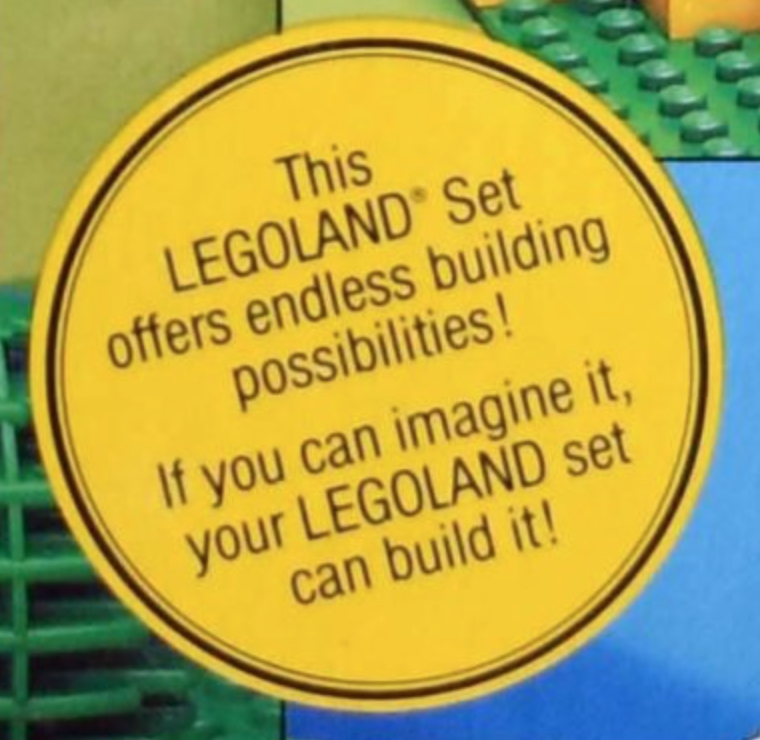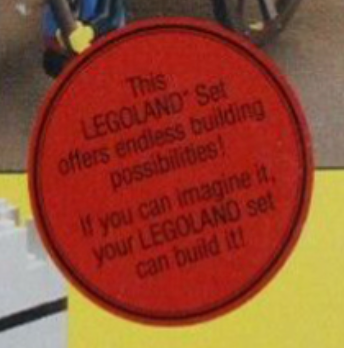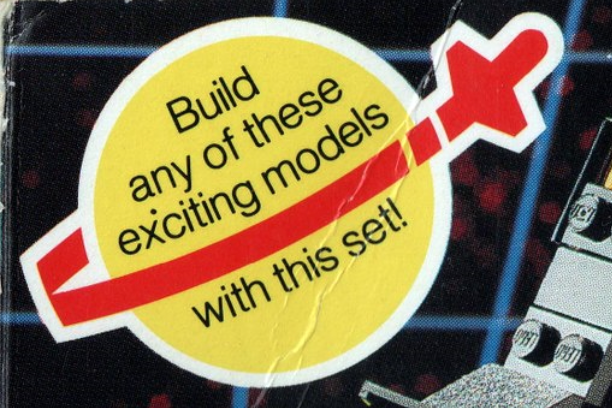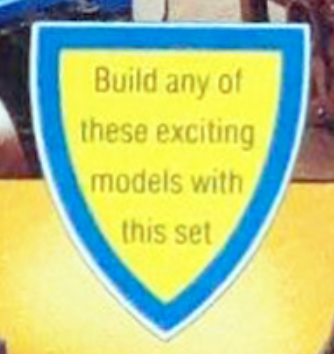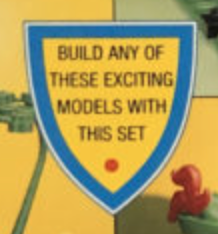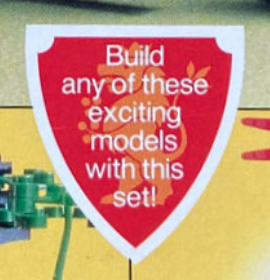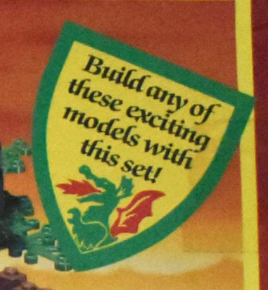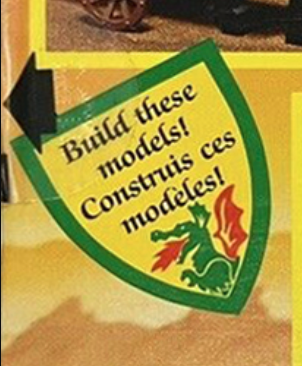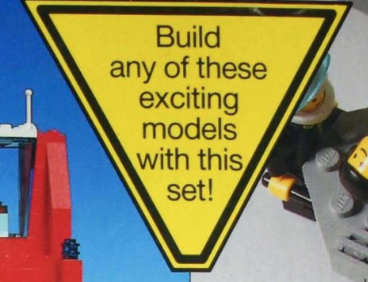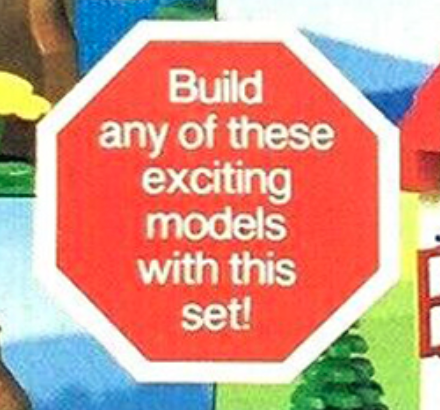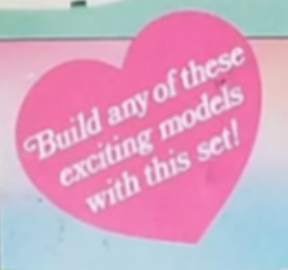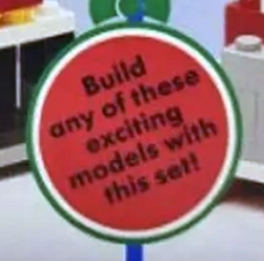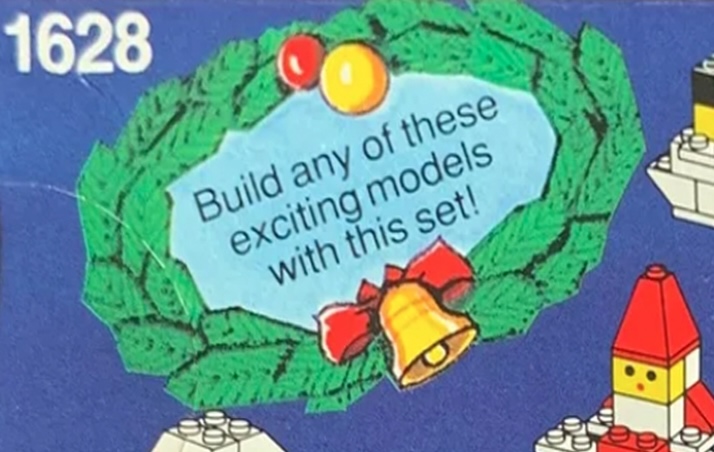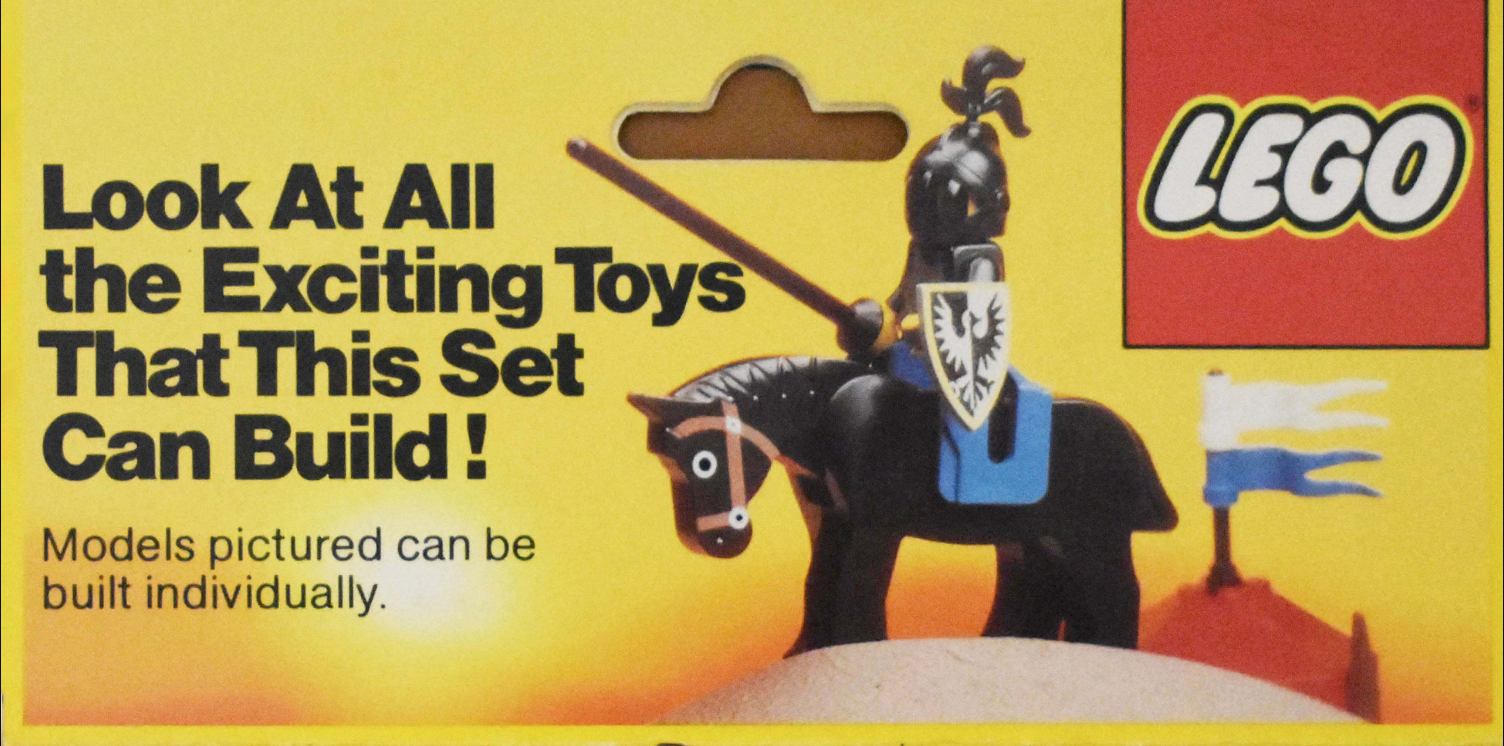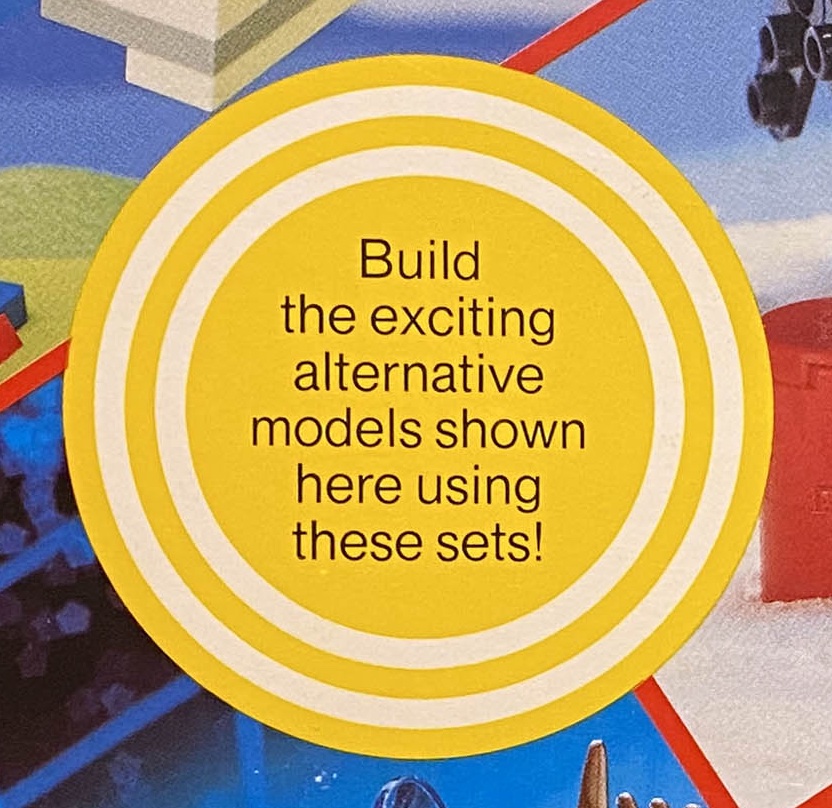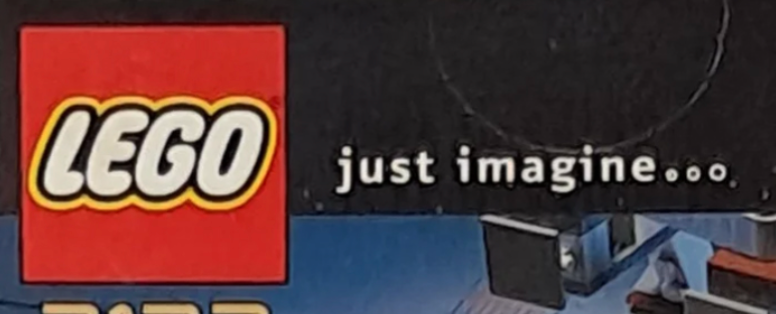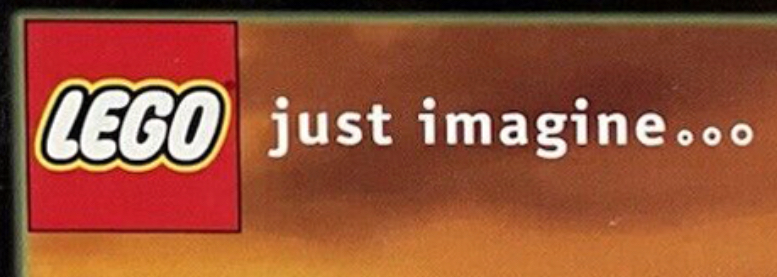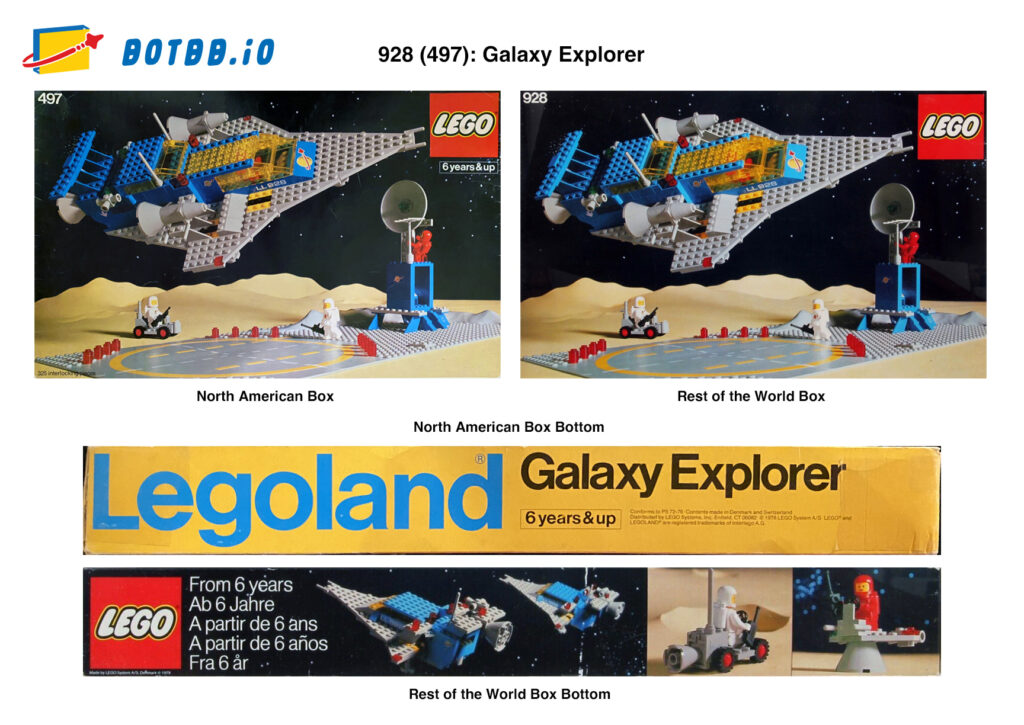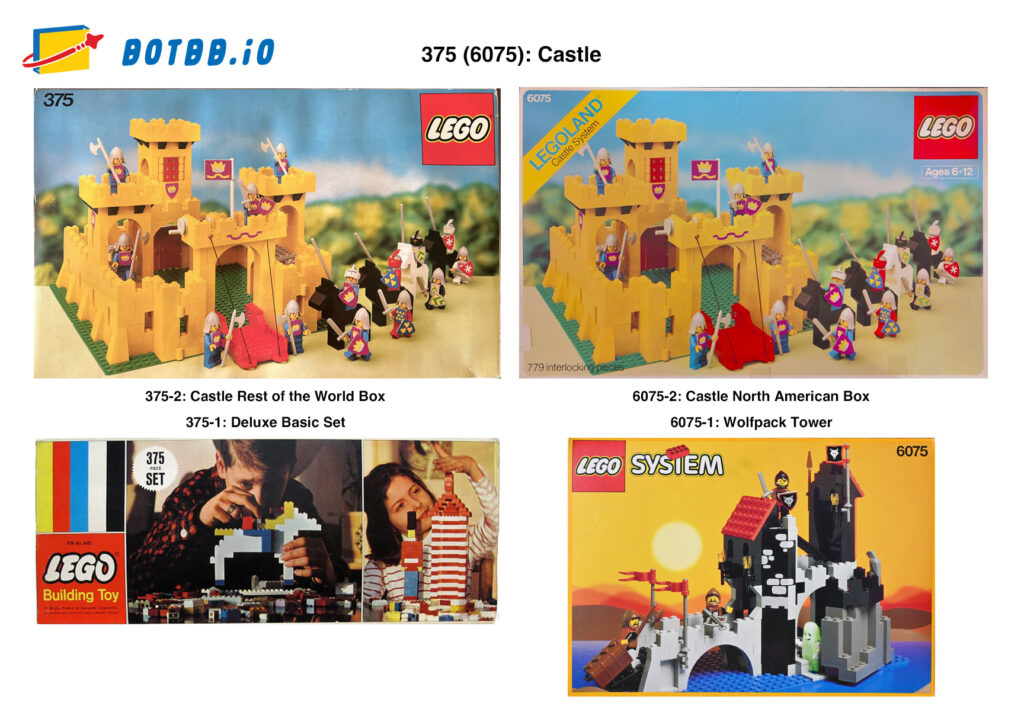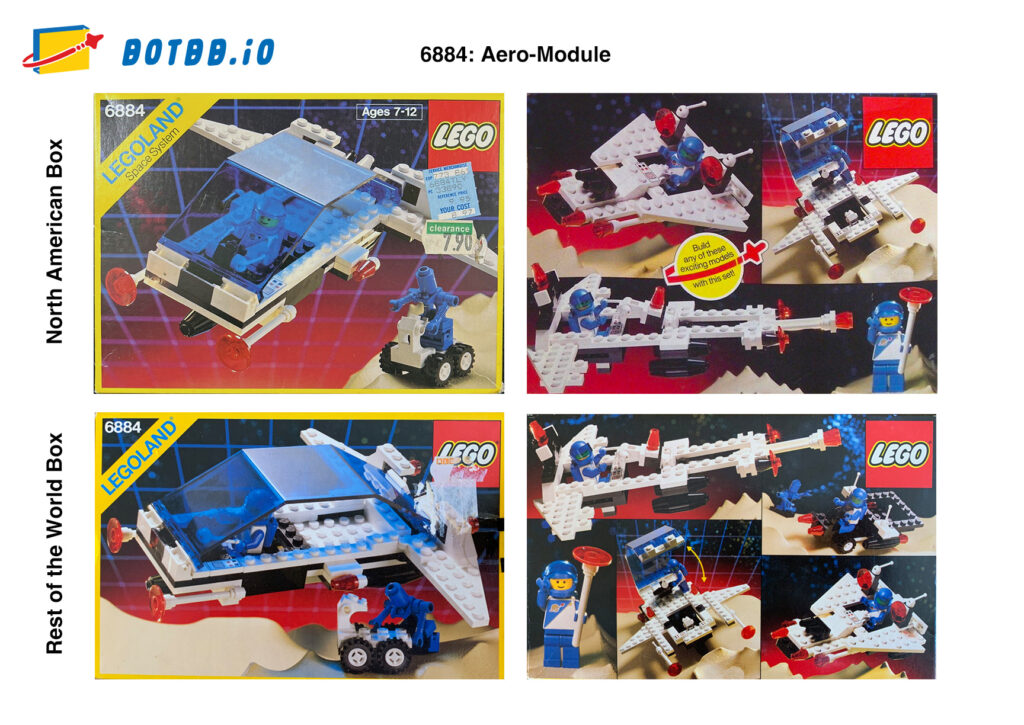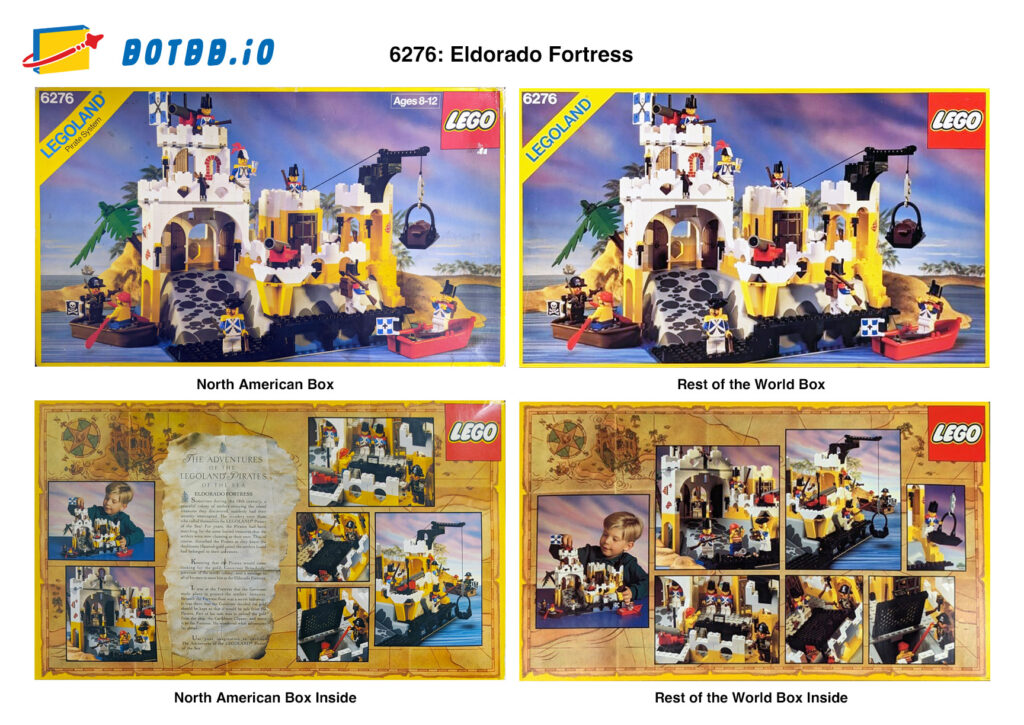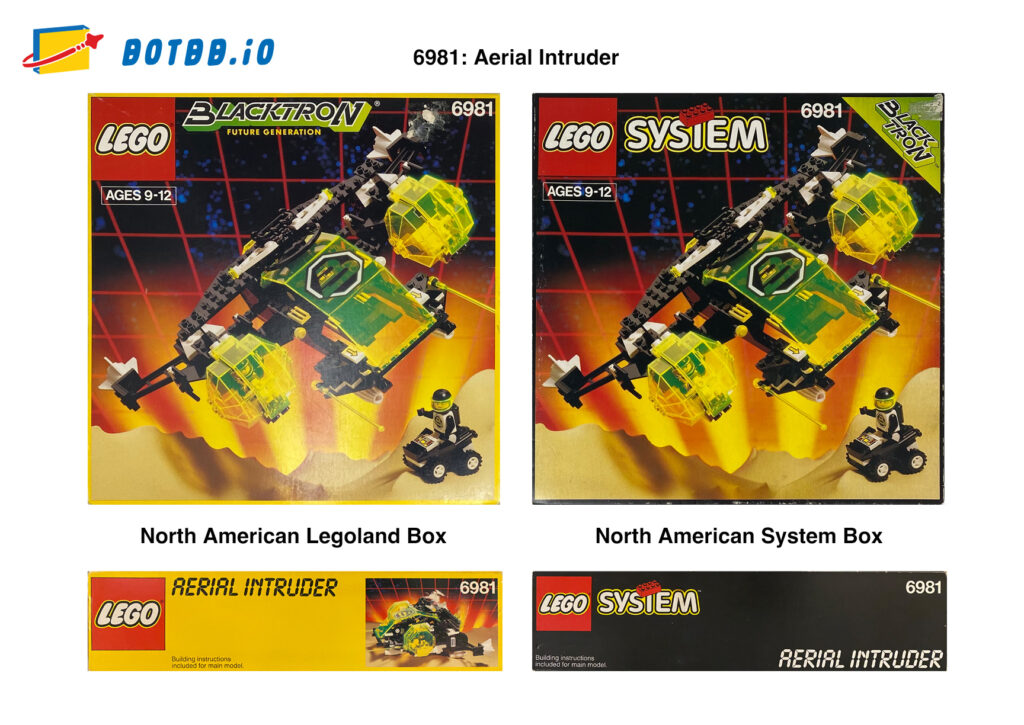In the 1960s, 70s, 80s, 90s, and early 2000s there were pictures of additional builds on the back of LEGO® boxes. LEGO stopped putting alternate build photos on the back sometime in 2006 (the last box with alternates might be a Star Wars set or an Exo-Force). Why did LEGO stop including these alternate builds on the back of the box? We’ll get to those theories, but these boxes that featured alternate builds, were not all the same.
Different Boxes
LEGO typically had two types of box: a North American version and one for the rest of the world. Some sets were given a different number between North America and the rest of the world (see 928 (497): Galaxy Explorer). We don’t know why that was the case for distribution, or why and how these set numbers were determined.
Different Numbers
The set numbering gets complicated. Take for example the classic yellow Castle released in 1981. The rest of the world knows this set as 375. But, this is the same number as the Samsonite 375: Deluxe Basic Set released much earlier in 1966. The North American version of the Castle is numbered 6075. Later, that same number was used for 6075: Wolfpack Tower released in 1992. These sets are typically cataloged as 6075-1 or 6075-2 to differentiate them. Sub-numbering becomes even more detailed with sets in Bonus/Value Packs, in which the bundled packs themselves have their own set number (see 1843: Space/Castle Value Pack).
Different Labels
About these boxes, in the 1970s-early 1990s, the word “Legoland” was typically featured diagonally in the upper left corner on a yellow background. US boxes have additional text below this “Legoland” banner, such as “Town System, “Castle System,” or “Space System.” Canadian boxes typically have “Building Toy / Jeu de Construction” below the banner instead, or written somewhere on the front. North American boxes also have an age recommendation and set piece count typically included on the front. The rest of the world’s box versions were simpler, without all the extra info on the front. There are even different box versions, sets with different box shapes and sizes with a different photo arrangement, or even more pictures of alternate builds on the back or sides!
The Inside Flap
The inside flap of the box would usually feature a child playing with the set and photos of different angles or alternate builds. The North American boxes typically included a LEGO marketing blurb or tells a story to set a scene with the set and minifigs. The rest of the world’s boxes didn’t have this element, just pictures on the inside flap.
A New System
Around 1992, the Legoland yellow style boxes were replaced with a “System” box. The word “System” with a brick on the T became the new box brand. While the use of system as a description was not new to LEGO, this big word “System” marked a box design change. Some themes even have both of these two box designs marketed during this transition (see Blacktron II).
LEGO has a long history using compatible bricks as part of a system. The LEGO logo and the word “System” has been used since the 1960s (see 725: Town Plan). The decision to discontinue the “Legoland” labeled boxes may have been to avoid confusion with the Legoland theme parks. Legoland theme parks started to expand in 1992 and the theme parks have their own product line and sets with the Legoland label.
Playscapes
A very unique feature on some set boxes is a playscape. The box would include an image or terrain, giving the set a play stage with the box to make a scene. The packaging and use of the set box included with the playscape varies.
Value Packs
Sets were sometimes combined and marketed in various value packs, offering a bonus pack, grouping unique theme sets, or even including promotional instructions. These value packs and their numbering vary wildly as do their packaging and inclusion, or lack of, alternate builds on the back of box. Some sets are in a single package, all with the same set number (see 1974: Legoland Triple Pack). Some sets are in a single package, but all have separate set numbers (see 1476: 5 Set Bonus Pack). Some packs contain several different numbered sets and are in a package with a new unique set number (see 1616: Space Combi-Pack). And some packs contain several different numbered sets, but the value pack doesn’t get a unique set number. Because these value packs and promotions varied and were sold in so many different ways, in so many different places, there are even rumors of value packs that may or may not exist (see 9401: M-Tron Team)!
Build Any of These Exciting Models
A major distinction on the back of the boxes is also found on the North American versions – a note or badge saying something about all the different building options, “build any of these exciting models with this set!” The rest of the world’s boxes didn’t have that. With the introduction of licensed sets such as Star Wars (1999) and Harry Potter (2001) this note read, “just imagine…” written on the back of the box.
Where Did The Alternates Go?
There are a couple different theories why LEGO stopped adding these alternate builds. Perhaps too many parents complained that their child didn’t have instructions for these builds. Perhaps it became too time consuming for LEGO designers to build and photograph so many models. And if you like conspiracy theories, perhaps the licensed themes stopped the alternate builds that came into their universe of movies and books as things got too out of character (looking at you Luke and your bi-plane at Jabba’s Palace or whatever this is).
Endless Building Possibilities
Regardless of what country you’re in or which box you’ve got, the endless building possibilities remain. Now, with your help, building instructions are included for the alternate model! Let us know if you’ve got something awesome to add about all these amazing boxes!
